/ WORK AVAILABLE BY
Pamoja
![]()
![]()
![]()
![]()
![]()
![]()
![]()
![]()
![]()
︎ Inquire
Pamoja is a collective of eight self-taught Kenyan artists who were frequent collaborators of the legendary photographer Peter Beard in illustrating his work for over four decades (1968-2017). Its members are Elizaphanson Mwangi Kuria Gibson, Nathaniel Kivoi Philip Mathenge, Gabriel Macharia Mwangi, Gibson Kuria Mwangi, Macharia Mwangi, Solomon Misigo Mugasia, Nicholas Njenga Mutarin, and Peter Marimbe Parsimei. Although their individual and collective artistic pursuits differ formally, all revolve around themes of wildlife and environmental conservation, are keenly observed, and display deep knowledge of craft. Pamoja—Swahili for “together”—is an effort by its members to continue their passion for making, and to embolden makers like themselves who are often overlooked, buried or dismissed in the pages of art history. On their individual accord and through their contributions to Beard’s studio, the collective’s skill is represented in prominent public and private collections of art around the world. Pamoja’s work has been shown under their own names at Affirmation Arts in New York, NY and at the Outsider Art Fair in New York, NY. They have been featured in The Art Newspaper and mentioned in The New York Times. The members are currently scattered across Kenya, but hope to build a collective studio in Nairobi from which they can work and bring art into the surrounding community.
Nathaniel ‘Kivoi’ Philip Mathenge (b. 1941, Nyeri, Kenya) has no formal education in art. In his youth he worked as a caretaker at the Aberdare National Park in Kenya, where he first met the photographer Peter Beard. Striking up a friendship, Beard contracted Kivoi to help him write and illustrate the well-known title ‘Tales of Kamante.’ For nearly a decade (1966-1975) Kivoi worked alongside Beard and under his direction, sketching and painting vignettes of animals in the margins of the text pages, the catalyst of Beard’s ‘Hog Ranch Art Department’ through which Beard produced the paintings and collages across the surface of his photographs. Many of the Art Department collaborators went on to form Pamoja, continuing the artistic practices that Beard had nurtured.Kivoi works intuitively in paint and ink, using his time at Aberdare National Park as a motif throughout his work in order to promote the importance of the worldwide effort to conserve and protect nature and wildlife.
Elizaphanson Mwangi Kuria Gibson (b. 1945; Muranga County, Kenya), also known as ‘Mzee Mwangi’ (“Elder Mwangi”), began drawing in his youth while studying at Kihiga Primary School but ultimately went on to study bookkeeping. In 1961, disenchanted by this career path, Mzee Mwangi began to study art at an interracial public high school in Nairobi. Though Mzee was offered positions as an illustrator at local and state newspapers, he declined, preferring to instead work as a carpenter. His carpentry skills soon attracted the attention of legendary photographer Peter Beard, who owned a ranch (“Hog Ranch”) outside of Nairobi, and Mzee was hired to build and repair tents and other structures in the camp. Later, after Beard noticed his interest and skill in art, Mzee was appointed as one of the first members of the Hog Ranch Art Department, a group of artist who embellished Beard’s black and white photographs for nearly 40 years. Mzee Mwangi’s work incorporates ideas of wildlife, nature and African culture, both traditional and contemporary, and his career has impacted members of his sphere, including mentoring two of his sons (Gibson Kuria Mwangi, Macharia Mwangi). Mzee’s work is represented in prominent private collections of art around the world and has been featured in the New York Times and The Art Newspaper.
Gibson Kuria Mwangi (b. 1976, Rongai, Kajiando County, Kenya), also referred to as ‘Maina,’ he is the second child of Mzee Mwangi and brother to Macharia Mwangi. He has worked in sculpture, stitching and painting since his childhood. Maina dropped out of school around the age of 12, working the mikokoteni (push carts) until he joined the Hog Ranch Art Department. Maina describes the creative process akin to driving a car or riding a bicycle in that it “never leaves your blood.” He also views art as second nature, believing that “it exists everywhere.” The artist’s work often focuses on the complicated relationship between nature, tourism and traditional culture, and will utilize material like plastic sheeting or cloth to texturize the base layer of his canvases from which he will substantiate or suggest human, animal and plant life.
Macharia Mwangi (b. 1994, Kajiado County, Kenya) comes from a family of artists (his father, Elizaphanson ‘Mzee’ Mwangi, and brother, Gibson Kuria Mwangi, are also members of the Collective). Macharia’s artistic pursuits began with a local art class in his teenage years and continued under the tutelage of his family members. Born with a bone disease, he hopes to utilize Pamoja as a platform for teaching art to other disabled artists. Macharia’s work draws on his life experiences and uses symbolism, the figure, nature and phenomenological events as a way of exploring and interpreting his thoughts, memories and emotions.
Gabriel Macharia Mwangi (b. 1947, Kenya) began his creative career in 1959 as a guitarist, which he pursued for 30 years. As a young man, Gabriel recorded with local artists, writing lyrics in Swahili, Kikuyu and English, and playing in clubs or wherever else his small ensemble could secure a gig. Gabriel began working in a formal recording studio in 1968, making music inspired by Jim Reeves, Charlie Pride and The Beatles. However, he faced challenges playing secular music at this time in Kenya, which has always been a religious country. He persisted despite this, and many years later was hired by Peter Beard to entertain his guests. Beard soon discovered Gabriel’s interest in and talent with paint, and asked him to collaborate on his photographs, opening the door to the artist’s second, if not late-in-life, creative chapter. His work is centered on depicting animals and the landscape.
Solomon Misigo Mugasia (b. 1976; Busia, Western Kenya) and his younger brother made their way to Nairobi in 1998 to look for work, just after high school. Living with his uncle and then with an aunt, Solomon worked odd jobs including construction and as a cleaner. The turning point came when his aunt returned home from her job at Beard’s Hog Ranch and asked Solomon if he knew how to draw and paint. Solomon describes his time painting with the other artists at Hog Ranch as his “college,” elaborating that this experience with Beard laid the foundation for him as an artist. Solomon’s work aims to “tell a story through wildlife,” depicting ecosystems of people, animals and symbols often pulled from the complex abstract washes that act as his base. His paintings have incorporated materials and tools such as dead insects, leaf prints, and his feet to portray our interconnectedness with nature. The artist affirms that these “bonds make us one with all, and are sustained through love.”
Nicholas Njenga Mutarin (b. 1981, Rongai, Kajiando County, Kenya) began drawing as a way of passing the time at grammar school in Nairobi. After completing school, he worked as a graphic designer, creating signage for kiosks and local businesses. Eventually, Njenga’s friends Marimbe and Maina introduced him to Mzee Mwangi who was working at Peter Beard’s Ranch in 2002, and while he was initially hired due to his lettering prowess, Beard and members of the Art Department soon taught him dotting techniques. Like many of the members of Pamoja, Njenga’s work is focused on nature and the impact of modern culture on the environment.
Peter Marimbe Parsimei (b. 1978, Rongai, Kajiando County, Kenya) collaborated with artist Peter Beard at Hog Ranch from 1999 to 2011. Marimbe was first introduced to painting by Mzee Mwangi, his neighbor. Watching the elder work lit a creative spark within him, and he was approached by Mzee and his son Maina, Marimbe’s friend, to work with Beard at Hog Ranch. Twenty-three years on Marimbe maintains that art is his life, his top priority, and that making is always on his mind. The artist’s work targets themes of conservation and the environment.
Presentations:
︎ The Mingled Destinies of Crocodiles and Men
︎ Outsider Art Fair 2024
︎ Kenyan Collectives
Press:
︎ The New York Times
︎ The Art Newspaper
︎ The Art Newspaper
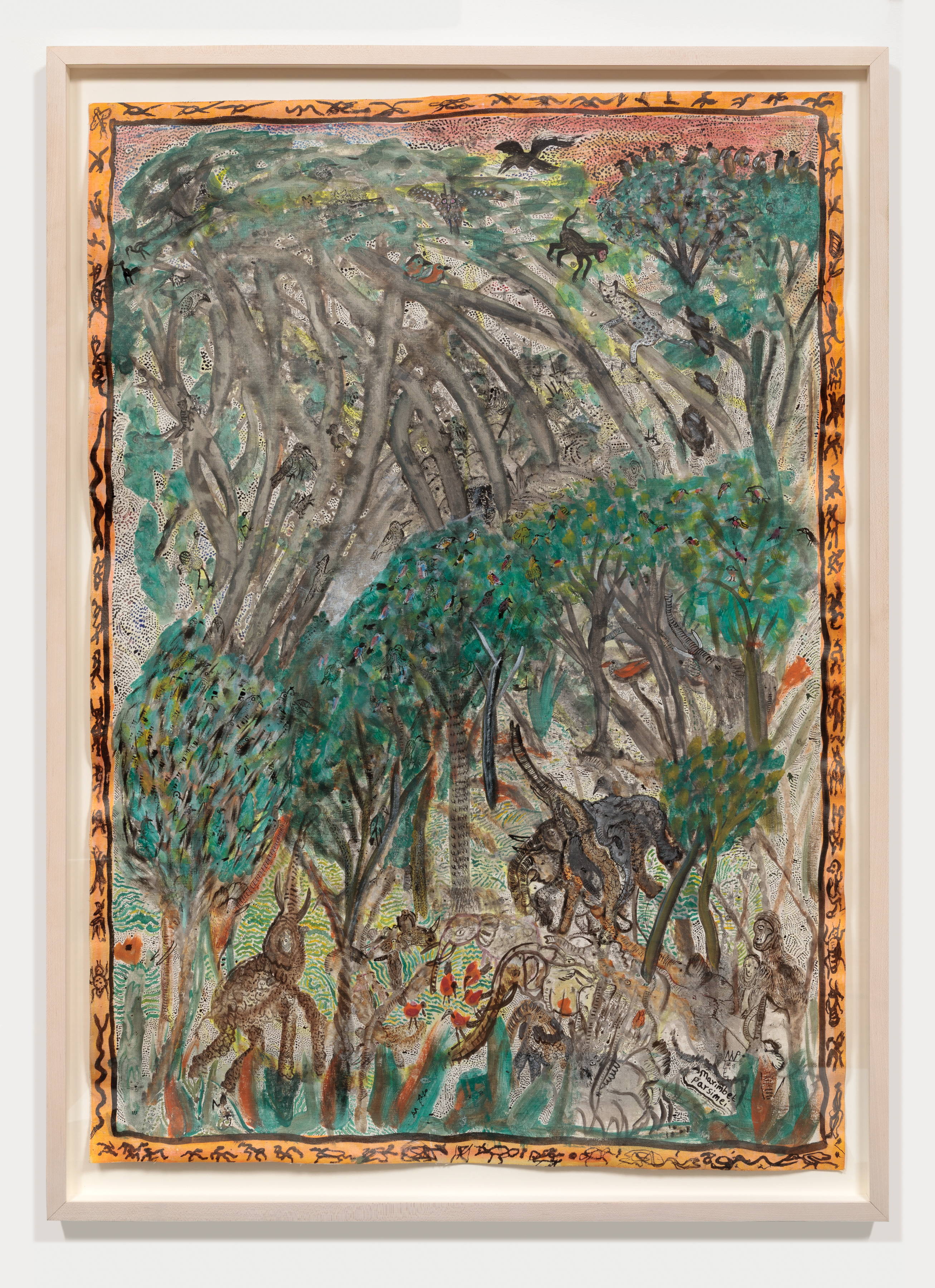

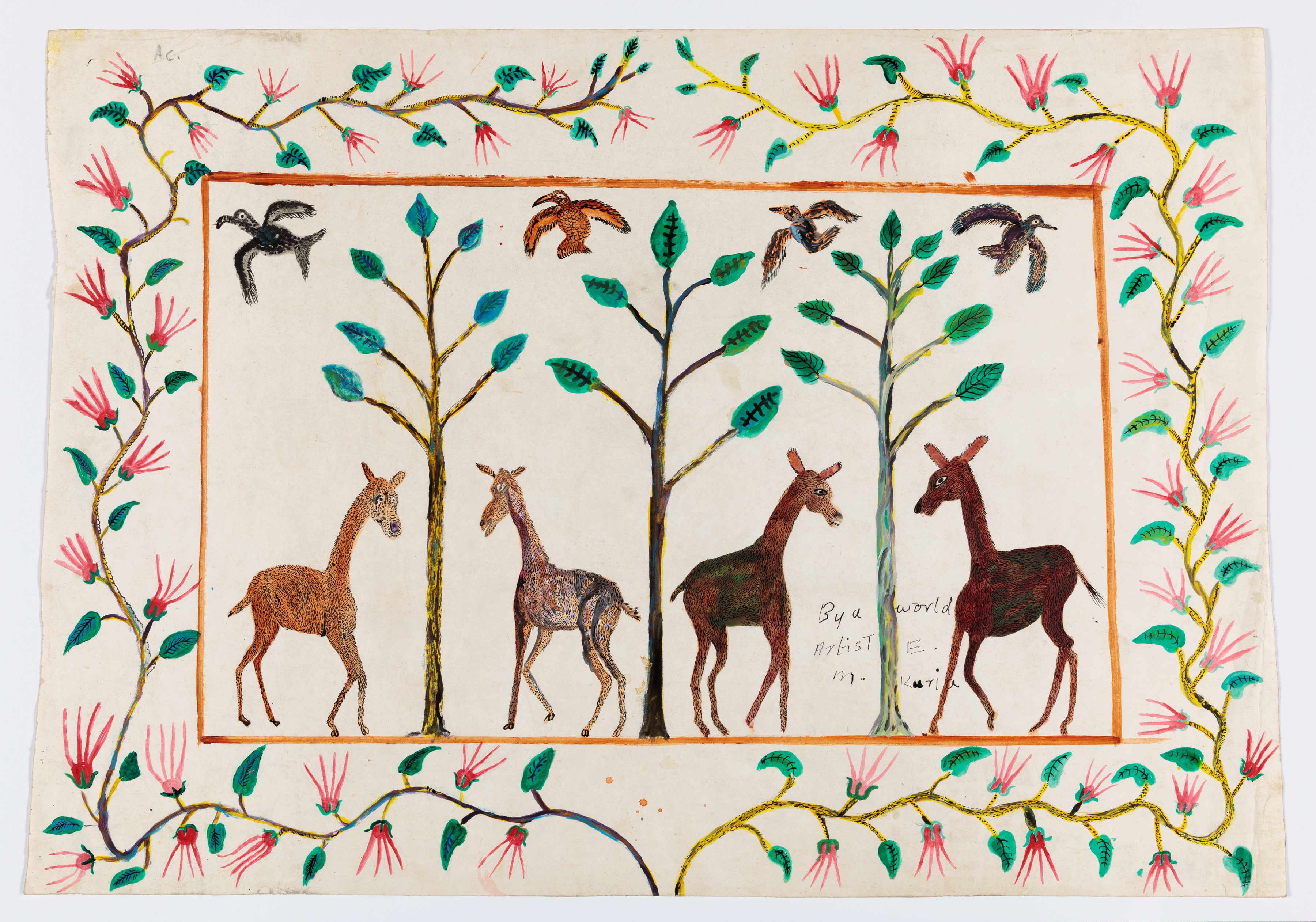

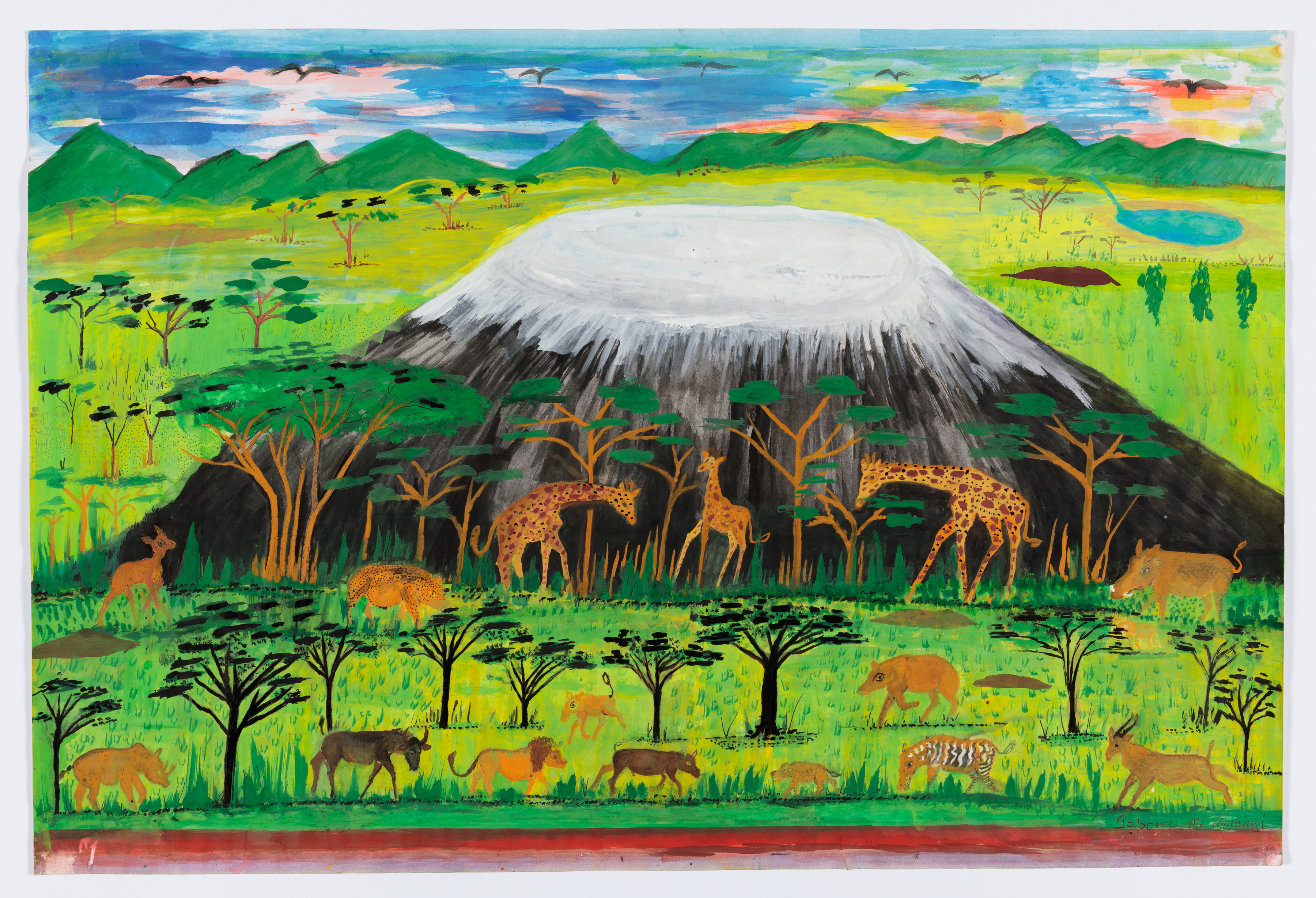
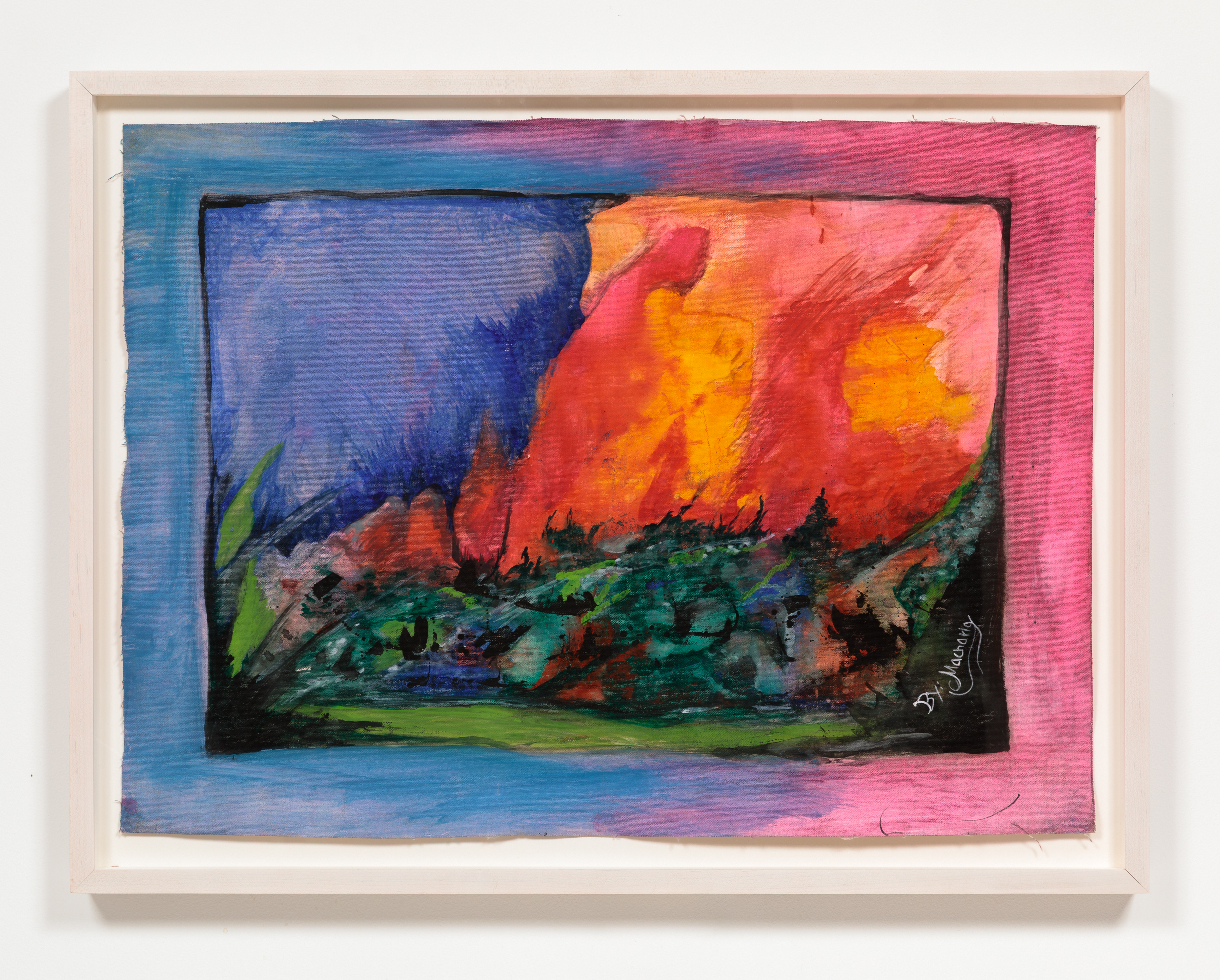
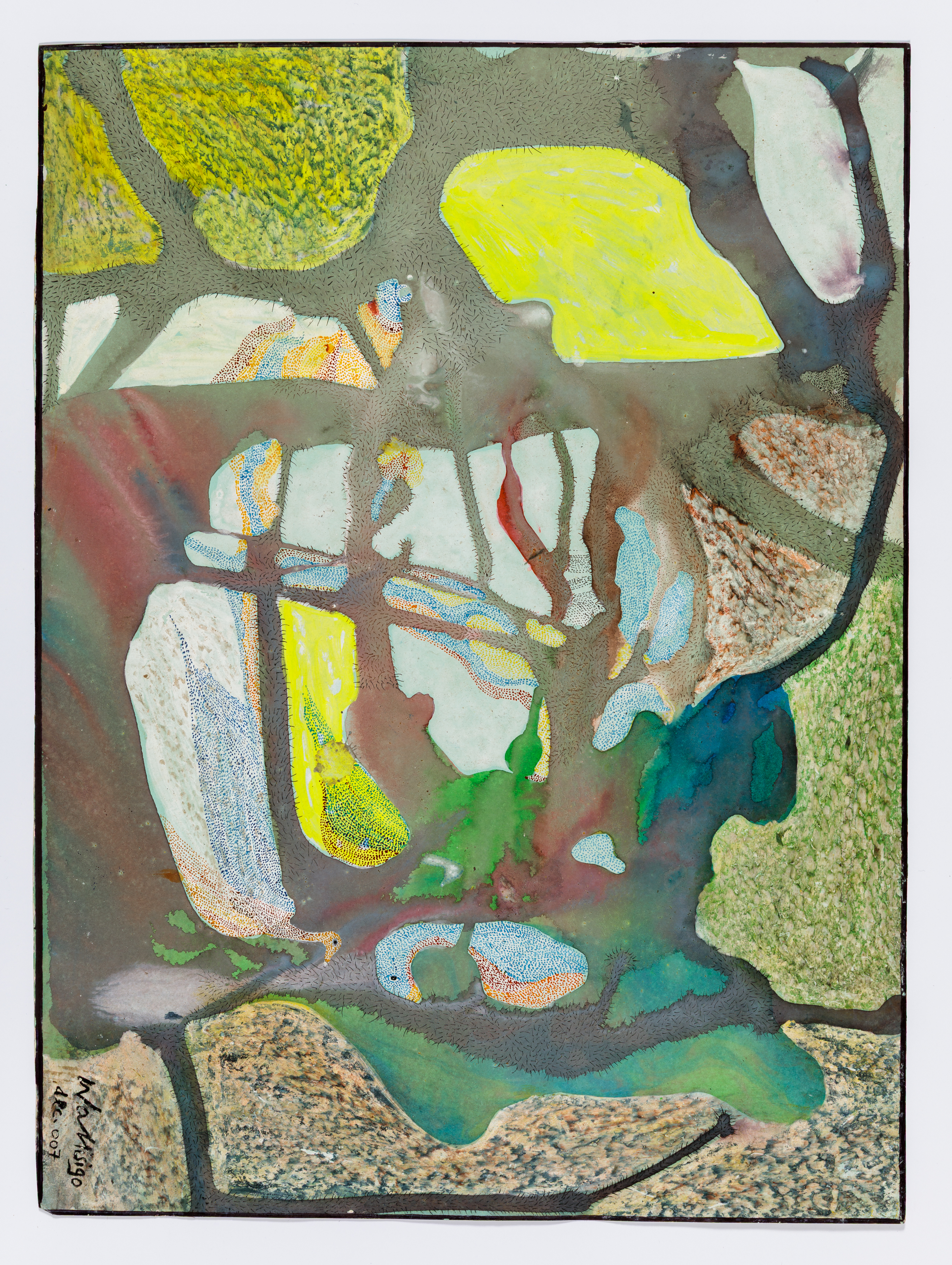
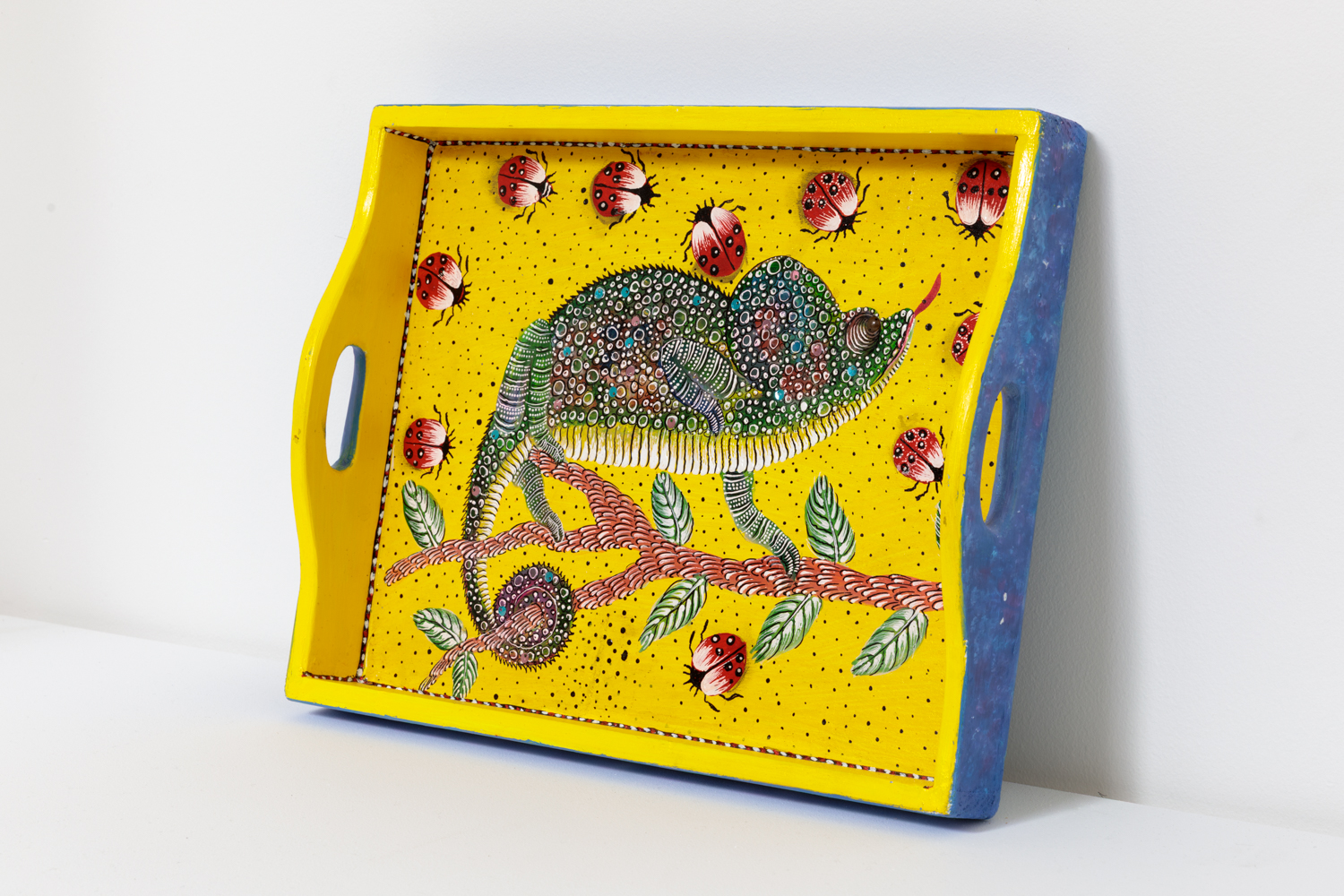
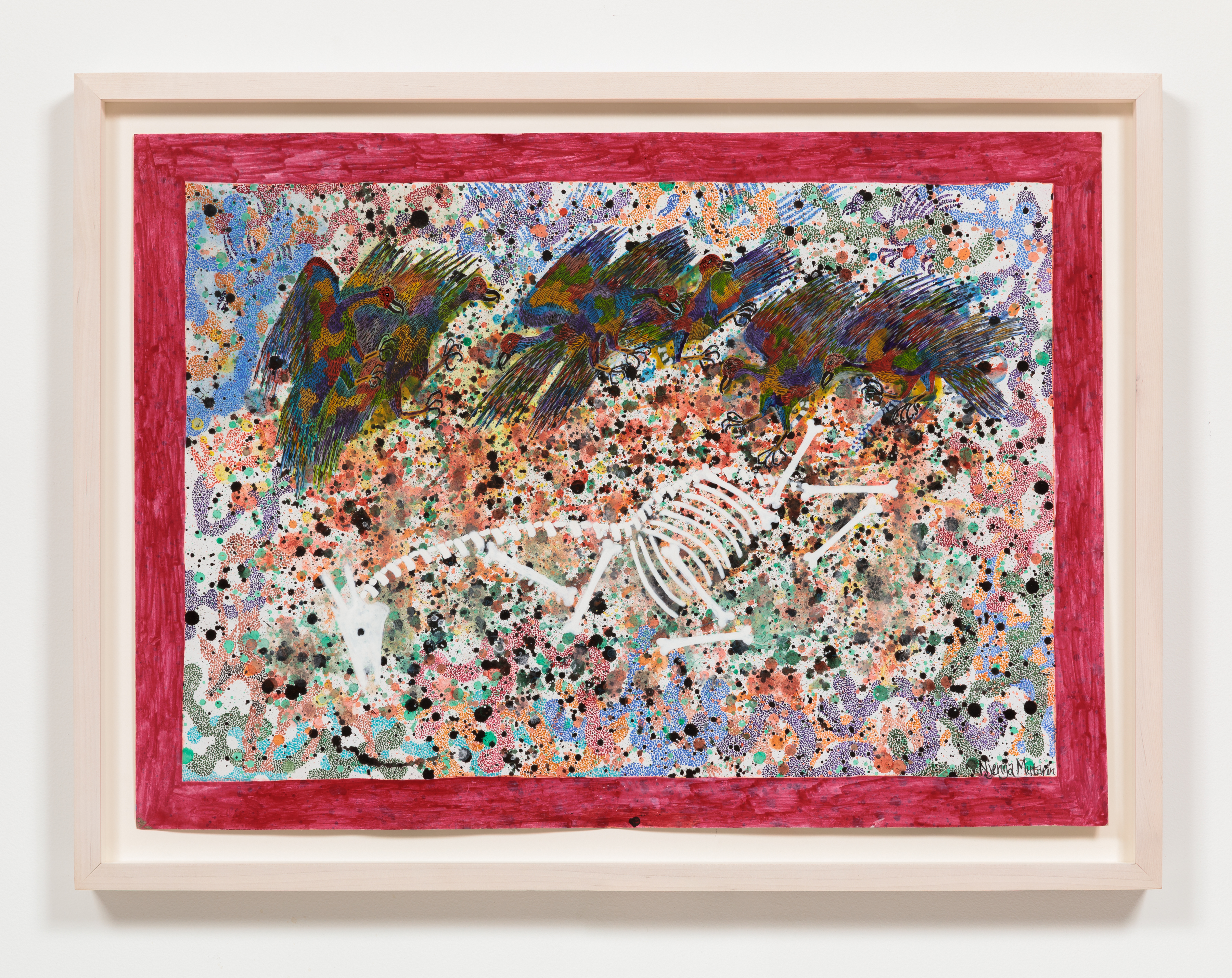
︎ Inquire
Pamoja is a collective of eight self-taught Kenyan artists who were frequent collaborators of the legendary photographer Peter Beard in illustrating his work for over four decades (1968-2017). Its members are Elizaphanson Mwangi Kuria Gibson, Nathaniel Kivoi Philip Mathenge, Gabriel Macharia Mwangi, Gibson Kuria Mwangi, Macharia Mwangi, Solomon Misigo Mugasia, Nicholas Njenga Mutarin, and Peter Marimbe Parsimei. Although their individual and collective artistic pursuits differ formally, all revolve around themes of wildlife and environmental conservation, are keenly observed, and display deep knowledge of craft. Pamoja—Swahili for “together”—is an effort by its members to continue their passion for making, and to embolden makers like themselves who are often overlooked, buried or dismissed in the pages of art history. On their individual accord and through their contributions to Beard’s studio, the collective’s skill is represented in prominent public and private collections of art around the world. Pamoja’s work has been shown under their own names at Affirmation Arts in New York, NY and at the Outsider Art Fair in New York, NY. They have been featured in The Art Newspaper and mentioned in The New York Times. The members are currently scattered across Kenya, but hope to build a collective studio in Nairobi from which they can work and bring art into the surrounding community.
Nathaniel ‘Kivoi’ Philip Mathenge (b. 1941, Nyeri, Kenya) has no formal education in art. In his youth he worked as a caretaker at the Aberdare National Park in Kenya, where he first met the photographer Peter Beard. Striking up a friendship, Beard contracted Kivoi to help him write and illustrate the well-known title ‘Tales of Kamante.’ For nearly a decade (1966-1975) Kivoi worked alongside Beard and under his direction, sketching and painting vignettes of animals in the margins of the text pages, the catalyst of Beard’s ‘Hog Ranch Art Department’ through which Beard produced the paintings and collages across the surface of his photographs. Many of the Art Department collaborators went on to form Pamoja, continuing the artistic practices that Beard had nurtured.Kivoi works intuitively in paint and ink, using his time at Aberdare National Park as a motif throughout his work in order to promote the importance of the worldwide effort to conserve and protect nature and wildlife.
Elizaphanson Mwangi Kuria Gibson (b. 1945; Muranga County, Kenya), also known as ‘Mzee Mwangi’ (“Elder Mwangi”), began drawing in his youth while studying at Kihiga Primary School but ultimately went on to study bookkeeping. In 1961, disenchanted by this career path, Mzee Mwangi began to study art at an interracial public high school in Nairobi. Though Mzee was offered positions as an illustrator at local and state newspapers, he declined, preferring to instead work as a carpenter. His carpentry skills soon attracted the attention of legendary photographer Peter Beard, who owned a ranch (“Hog Ranch”) outside of Nairobi, and Mzee was hired to build and repair tents and other structures in the camp. Later, after Beard noticed his interest and skill in art, Mzee was appointed as one of the first members of the Hog Ranch Art Department, a group of artist who embellished Beard’s black and white photographs for nearly 40 years. Mzee Mwangi’s work incorporates ideas of wildlife, nature and African culture, both traditional and contemporary, and his career has impacted members of his sphere, including mentoring two of his sons (Gibson Kuria Mwangi, Macharia Mwangi). Mzee’s work is represented in prominent private collections of art around the world and has been featured in the New York Times and The Art Newspaper.
Gibson Kuria Mwangi (b. 1976, Rongai, Kajiando County, Kenya), also referred to as ‘Maina,’ he is the second child of Mzee Mwangi and brother to Macharia Mwangi. He has worked in sculpture, stitching and painting since his childhood. Maina dropped out of school around the age of 12, working the mikokoteni (push carts) until he joined the Hog Ranch Art Department. Maina describes the creative process akin to driving a car or riding a bicycle in that it “never leaves your blood.” He also views art as second nature, believing that “it exists everywhere.” The artist’s work often focuses on the complicated relationship between nature, tourism and traditional culture, and will utilize material like plastic sheeting or cloth to texturize the base layer of his canvases from which he will substantiate or suggest human, animal and plant life.
Macharia Mwangi (b. 1994, Kajiado County, Kenya) comes from a family of artists (his father, Elizaphanson ‘Mzee’ Mwangi, and brother, Gibson Kuria Mwangi, are also members of the Collective). Macharia’s artistic pursuits began with a local art class in his teenage years and continued under the tutelage of his family members. Born with a bone disease, he hopes to utilize Pamoja as a platform for teaching art to other disabled artists. Macharia’s work draws on his life experiences and uses symbolism, the figure, nature and phenomenological events as a way of exploring and interpreting his thoughts, memories and emotions.
Gabriel Macharia Mwangi (b. 1947, Kenya) began his creative career in 1959 as a guitarist, which he pursued for 30 years. As a young man, Gabriel recorded with local artists, writing lyrics in Swahili, Kikuyu and English, and playing in clubs or wherever else his small ensemble could secure a gig. Gabriel began working in a formal recording studio in 1968, making music inspired by Jim Reeves, Charlie Pride and The Beatles. However, he faced challenges playing secular music at this time in Kenya, which has always been a religious country. He persisted despite this, and many years later was hired by Peter Beard to entertain his guests. Beard soon discovered Gabriel’s interest in and talent with paint, and asked him to collaborate on his photographs, opening the door to the artist’s second, if not late-in-life, creative chapter. His work is centered on depicting animals and the landscape.
Solomon Misigo Mugasia (b. 1976; Busia, Western Kenya) and his younger brother made their way to Nairobi in 1998 to look for work, just after high school. Living with his uncle and then with an aunt, Solomon worked odd jobs including construction and as a cleaner. The turning point came when his aunt returned home from her job at Beard’s Hog Ranch and asked Solomon if he knew how to draw and paint. Solomon describes his time painting with the other artists at Hog Ranch as his “college,” elaborating that this experience with Beard laid the foundation for him as an artist. Solomon’s work aims to “tell a story through wildlife,” depicting ecosystems of people, animals and symbols often pulled from the complex abstract washes that act as his base. His paintings have incorporated materials and tools such as dead insects, leaf prints, and his feet to portray our interconnectedness with nature. The artist affirms that these “bonds make us one with all, and are sustained through love.”
Nicholas Njenga Mutarin (b. 1981, Rongai, Kajiando County, Kenya) began drawing as a way of passing the time at grammar school in Nairobi. After completing school, he worked as a graphic designer, creating signage for kiosks and local businesses. Eventually, Njenga’s friends Marimbe and Maina introduced him to Mzee Mwangi who was working at Peter Beard’s Ranch in 2002, and while he was initially hired due to his lettering prowess, Beard and members of the Art Department soon taught him dotting techniques. Like many of the members of Pamoja, Njenga’s work is focused on nature and the impact of modern culture on the environment.
Peter Marimbe Parsimei (b. 1978, Rongai, Kajiando County, Kenya) collaborated with artist Peter Beard at Hog Ranch from 1999 to 2011. Marimbe was first introduced to painting by Mzee Mwangi, his neighbor. Watching the elder work lit a creative spark within him, and he was approached by Mzee and his son Maina, Marimbe’s friend, to work with Beard at Hog Ranch. Twenty-three years on Marimbe maintains that art is his life, his top priority, and that making is always on his mind. The artist’s work targets themes of conservation and the environment.
Presentations:
︎ The Mingled Destinies of Crocodiles and Men
︎ Outsider Art Fair 2024
︎ Kenyan Collectives
Press:
︎ The New York Times
︎ The Art Newspaper
︎ The Art Newspaper
